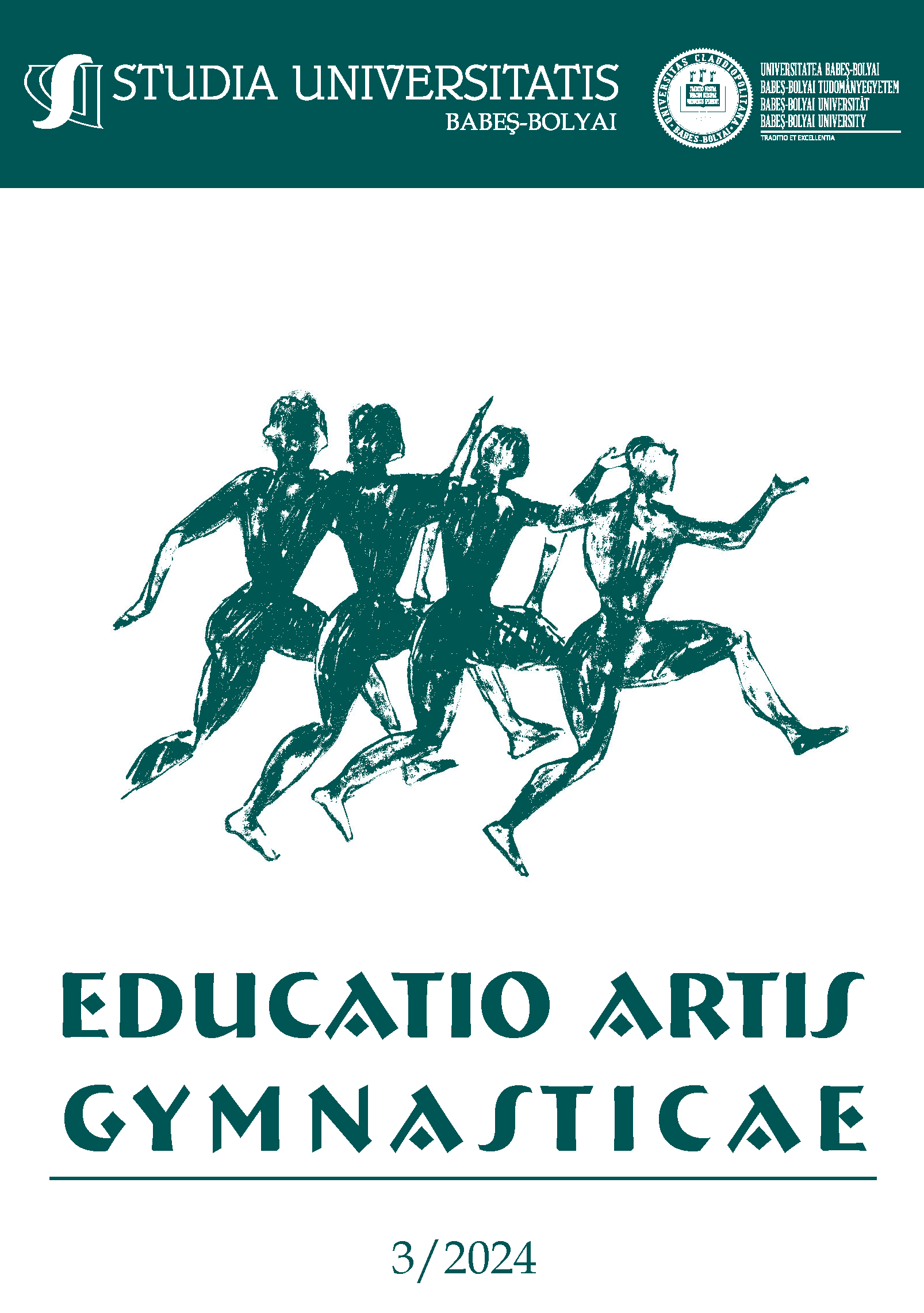Optimization of Balance and Flexibility Through the Rationalization of Methods in the Educational Process for Primary School Students (Ages 6-10)
DOI:
https://doi.org/10.24193/subbeag.69(3).21Keywords:
Balance, Flexibility, students, psychomotor skillsAbstract
Introduction: In physical education lessons, the proper rationalization of methods targeting psychomotor components will lead to improved coordination, perception, and analysis of body movements and the movements of its various parts in their interaction. A rationalized training system applied in teaching can prevent the phenomenon of insufficient or excessive exercise, promoting the standardized performance of exercises, which plays an important role in students’ physical and mental health. Objective: The general objective of this study is the rationalization of specific methods aimed at optimizing balance and flexibility in the instructional process for students aged 6-10 years. Methods: The Flamingo Test was used to determine lower body balance, and the Sit and Reach Test was used to measure flexibility. Results: The results of this study revealed significant differences in balance and flexibility performance among students in grades 1-4, both by gender and overall. The Mann-Whitney and Wilcoxon tests were used to evaluate these differences. For balance on one leg, p-values ranged from 0.003 to 0.75, indicating significant differences in some classes, particularly in grades 1 and 2. Flexibility, measured through jumping tests, showed significant differences in grade 2 (p=0.011) and grade 1 (p=0.032). These findings suggest the need for personalized interventions in balance and flexibility training to optimize physical development at these ages. Conclusions: Proper structuring of exercises, based on a detailed assessment of each student’s individual needs, facilitates improvements in balance and flexibility. This is reflected in both student performance and physical activities, having a positive impact on the overall educational process.
References
1. Faigenbaum, A. D., Milliken, L. A., Loud, R. L., Burak, B. T., Doherty, C. L., & Westcott, W. L. (2002). Comparison of 1 and 2 days per week of strength training in children. Research quarterly for exercise and sport, 73(4), 416-424.
2. Keating, X. D. (2003). The current often implemented fitness tests in physical education programs: Problems and future directions. Quest, 55(2), 141-160.
3. Lazăr, A. G. (2019). Improving students’ effort capacity through movement games in physical education lesson. The Annals of the "Stefan Cel Mare" University, Volume XII, Issue 2, https://annals-fefs.usv.ro/revista/improving-students-effort-capacity-through-movement-games-in-physical-education-lesson/.
4. Mas, M., Jiménez, L., & Riera, C. (2018). Systematization of the psychomotor activity and cognitive development. Psicología Educativa. Revista de los Psicológos de la Educación, 24(1), 38-41.
5. Moseichuk, Y., Zoriy, Y., Kostashchuk, T., Kanivets, T., Nakonechnyi, I., Koshura, A., ... & Galan, Y. (2020). Age peculiarities of the development of coordination abilities in children of primary school age in the process of physical education. Journal of Physical Education and Sport (JPES), 20 (2), Art 92., pp. 630 – 634.
Downloads
Published
How to Cite
Issue
Section
License
Copyright (c) 2024 Studia Universitatis Babeș-Bolyai Educatio Artis Gymnasticae

This work is licensed under a Creative Commons Attribution-NonCommercial-NoDerivatives 4.0 International License.



